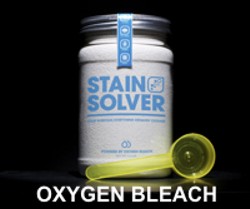How to Safely Clean a Deck or Patio
Spring is the time for many outdoor projects. This past winter was harsh by most standards. Some areas of the Northeast still have abundant snow cover the first week of April.
Your deck and patio may need attention, and the last thing you want to do is cause them even more harm. Unfortunately many homeowners damage their wood decks, docks and patios by using the wrong cleaning products and cleaning methods.
Watch a video of me showing how power washers can ruin wood decks and look at an alternative cleaning method that's safe for the wood and all plants and landscaping around the deck or patio:
Degree of Difficulty: 
Step One: Consider discarding all stored information in your brain about how you've cleaned wood decks, docks and outdoor patios in the past. Most of the information that's been published in the past is not correct.
Chlorine bleach, and any cleaners that contains sodium hypochlorite (chlorine bleach) are very harmful to wood, vegetation and aquatic life. Do not use chlorine bleach to clean anything outdoors.
Step Two: Pressure washers are extremely harmful to wood surfaces and masonry that doesn't meet the severe weathering standard. High-pressure water streams readily erode the soft lighter-colored spring wood grain you see in lumber leaving your wood deck or dock looking like a 50-year-old fishing pier.
 Step Three: Consider using a powdered oxygen bleach that mixes with water to clean your deck, dock and patios. Using one that's Certified organic is even better. Oxygen bleach mixes with water creating trillions of oxygen ions that deep clean mold, mildew, algae, and sun-damaged and oxidized deck and dock sealers.
Step Three: Consider using a powdered oxygen bleach that mixes with water to clean your deck, dock and patios. Using one that's Certified organic is even better. Oxygen bleach mixes with water creating trillions of oxygen ions that deep clean mold, mildew, algae, and sun-damaged and oxidized deck and dock sealers.
Step Four: After mixing the powdered oxygen bleach with water and making sure it's dissolved, apply it liberally to the deck, dock or patio with a hand-pump garden sprayer. It's best to apply it to a dry surface so the solution soaks in to deep clean even better.
Step Five: Work in the shade or early part of the day if possible to minimize evaporation. If the solution soaks in or starts to dry, add more solution. You want the surface to appear as if it's just rained on it. Allow solution to soak for at least 15 minutes.
Step Six: After 15 minutes, use a scrub brush on a pole to agitate the surface of the wood or patio. The longer you allow the oxygen bleach to soak, the less you have to scrub. Work in small areas of about 50 square feet at a time. It's best to have a helper who is applying the oxygen bleach solution in advance of the person scrubbing.
Step Seven: Rinse the cleaned surface with plenty of clear water immediately after scrubbing. The oxygen bleach runoff will not harm plants or expensive vegetation. Allow the deck, dock or patio to dry to witness the amazing cleaning power of oxygen bleach.
Step Eight: If you intend to apply a fresh coat of deck or dock sealer, use a semi-transparent one that's got medium color pigments and is made with synthetic resins.
Clear deck sealers will allow the wood to turn gray within months. Sealers that contain natural oils are food for mildew, mold and algae. Some of these have chemicals in them to slow the growth, but sunlight and water can remove these chemicals allowing your deck to turn black or green in no time.
Summary: Realize that high-pressure water streams are very destructive. If the water stream is powerful enough to clean off mold, mildew, algae, etc., it's more than enough power to remove the wood fibers from the light colored spring wood in your deck and dock. Don't let anyone tell you differently.
Column HT012
3 Responses to How to Safely Clean a Deck or Patio